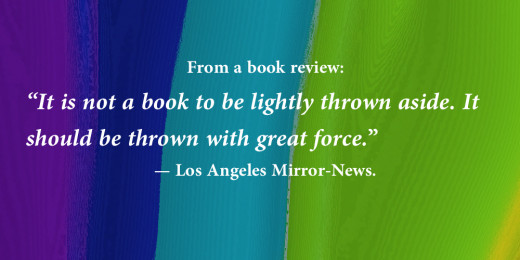What is the Difference Between a Novel and a Story?

According to Dictionary.com, the word 'novel' as applied to fiction means, "a fictitious prose narrative of considerable length and complexity, portraying characters and usually presenting a sequential organization of action and scenes," but defines the word, "story" as, "a fictitious tale, shorter and less elaborate than a novel." The definition of 'novel' is the first definition at Dictionary.com, the definition of 'story' is the second definition, but better explains the primary difference: length.
Widely quoted literary agent, Nathan Bransford, says that many agents automatically reject novels greater than 150,000 words. In my own interactions with publishers and agents (years ago, when I still had delusions of grandeur) I was told that a true novel should have a minimum of 50,000 words. Therefore I deduce that the proper submission length for a first novel should be no less than 50,000 words and no greater than 150,000 words, whereas a story could be any length at all. For example, when my daughter would request a third bedtime story, I would tell her,
"Once upon a time, in a land far, far away, they lived happily ever after, the end."
Actually, to be a real story I think it would have to have a beginning, a middle, and an end. This seems to only have a beginning and an end.
We see, therefore, that 'story' is the larger term that encompasses all fiction, including narrative poetry and, yes, novels. However, many novels contain more than one if not several separate stories, for example, plot, various sub-plots, incidental anecdotes and such that add richness and complexity to the work. In usage, 'story' usually means a tale about one individual, thing, or event. A novel can encompass many characters and events.
Short stories are a modern form of story, typically ranging from 1,500 to 5,000 words. Short stories are revered for their economy of words and their maximization of word usage. If you are going to get from point A to point B in 1,500 words and still deliver a powerful message, every word choice is going to be crucial.
As a writer, you demand a certain commitment from a reader embarking on reading your 100,000-word work of fiction. If you do your job creating proper suspension of disbelief in the first place, the commitment of the reader may make the reader more tolerant of some of the risks you may take while trying to maintain the continuity of the dream you have created for them. In a short story, the reader has less to lose if they put it down, so as a writer you may have to work harder to maintain their allegiance.

Suggested Reading
Some of my favorite books have influenced my thinking about writing. Though I am a very forgiving reader, I do know the difference between reading a novel that is truly great as opposed to one that is blandly entertaining or uses well-worn trickery to engage the reader.
The Lord of the Rings, J.R.R. Tolkien
Tolkien gets away with making a very long fairy tale exceptionally engaging to the reader through the strength of his characters. Read this work to see how the characters are constructed through their words, actions and feeling. Notice particularly the selective omniscience of the narrator as it drops into the minds of various characters.
White Noise, Don DeLillo
This novel is a landmark work in no small part because of its inventive word usage, stretching metaphor poetically to evoke complex feelings and emotions as well as vivid imagery. As such, it is an inspiring and enlightening read.
The Sound and the Fury, William Faulkner
I recommend this with some reservation as it is hard work at times to read, and the budding novelist might do just as well to read some of Faulkner's shorter works to get the gist of his genius. But aside from being an example of stream of consciousness writing and other inventive usage, few authors approach Faulkner's ability to coax a story to a truly breathtaking climax. This work is art for art's sake, and so well worth studying.
The Art of Fiction, John Gardner
Should be required reading for all writers.






